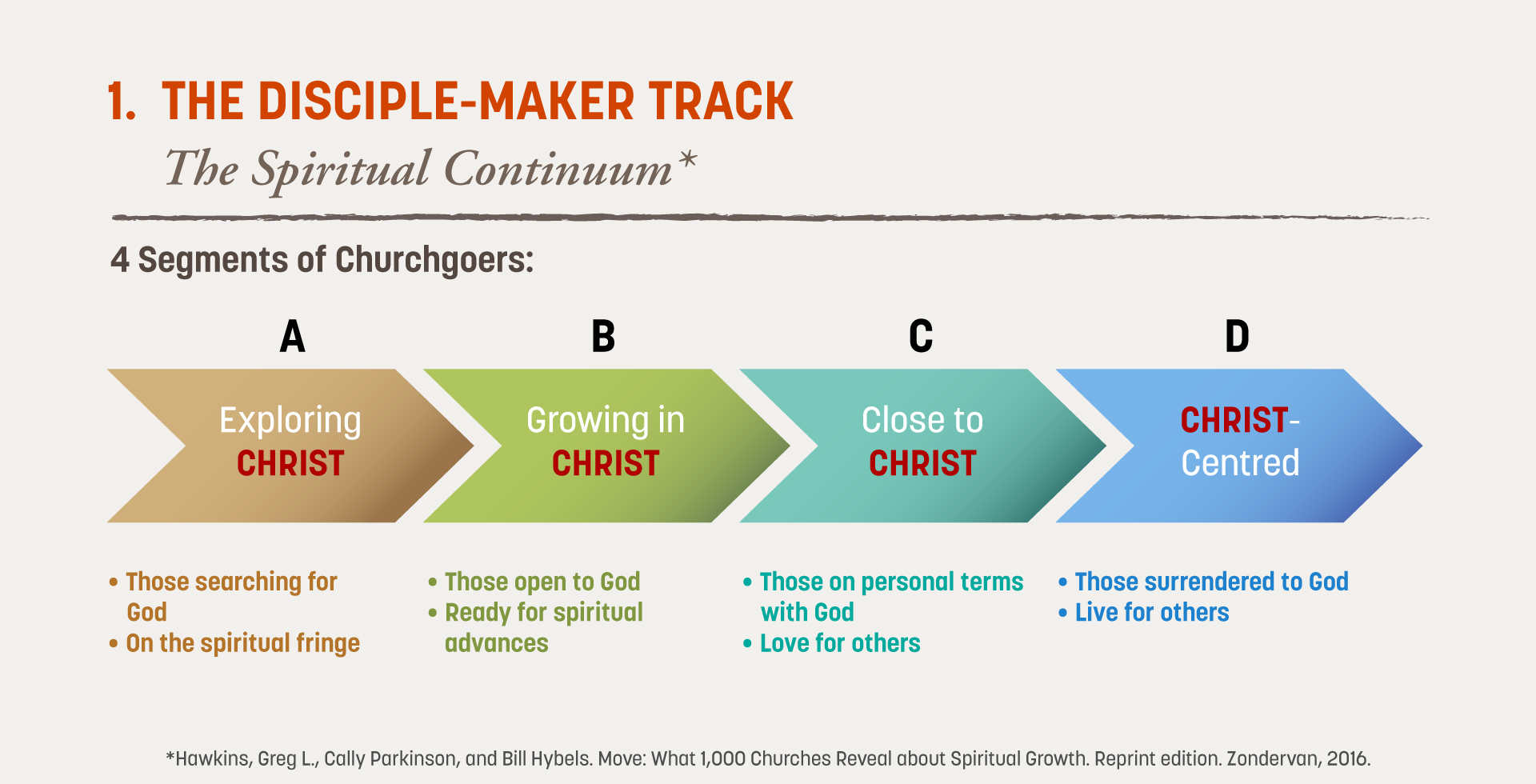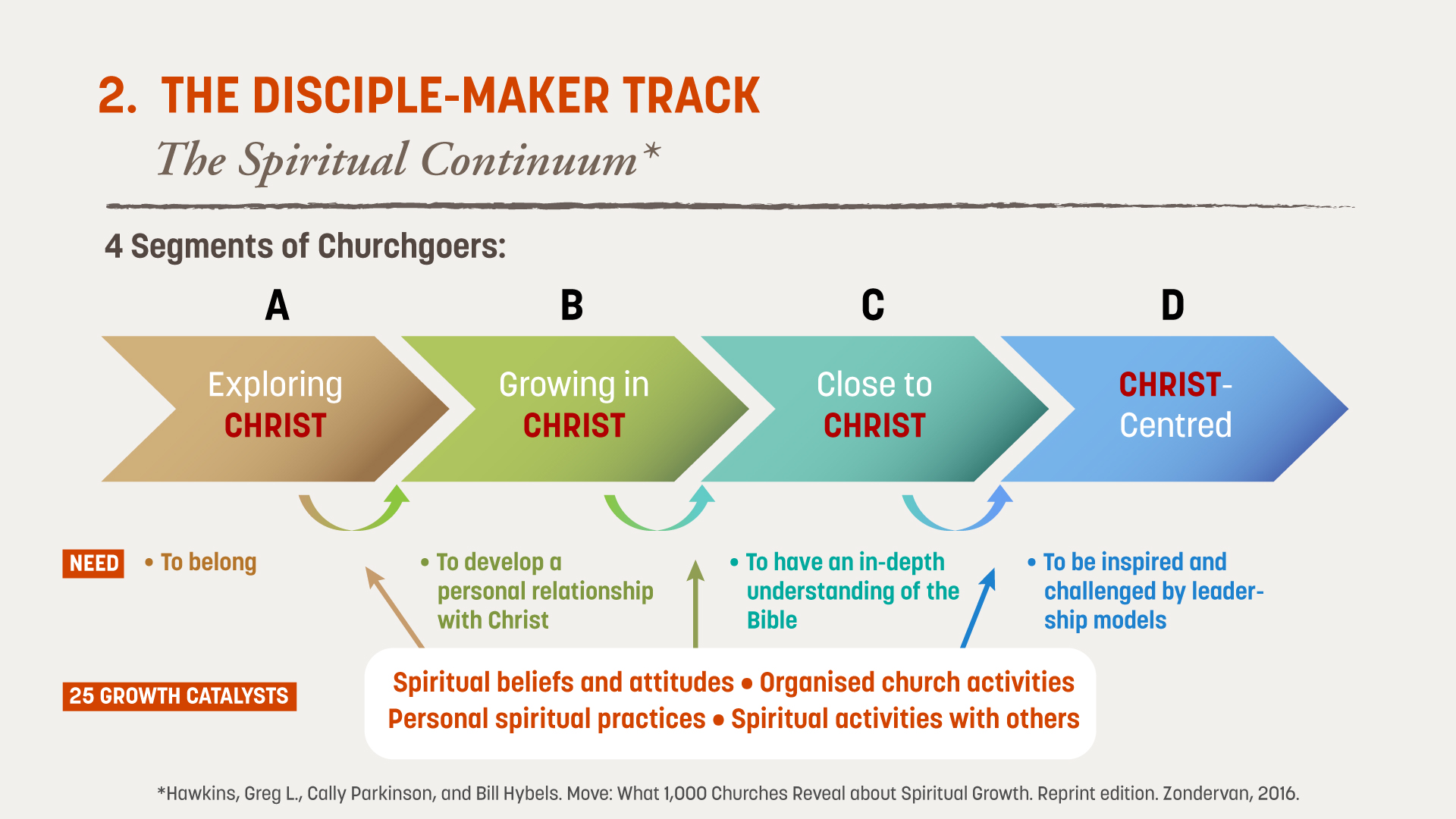
Our church vision, “More People, More Like Jesus,” succinctly captures the call and reason of existence for every church, including Grace Assembly. It contains our two core activities—evangelism, the sharing of the Gospel with the aim of helping people enter God’s Kingdom, and discipleship, the journey of Christ-likeness for those who have entered His Kingdom.
The goal of discipleship as stated by Pastor Wilson is “to raise Spirit-filled Gracians who love God, love people, and make disciples of Jesus Christ within and beyond the church walls.”
The anchor verses come from Matthew 28:18–20:
Then Jesus came to them and said, “All authority in heaven and on earth has been given to me. Therefore go and make disciples of all nations, baptizing them in the name of the Father and of the Son and of the Holy Spirit, and teaching them to obey everything I have commanded you. And surely I am with you always, to the very end of the age.”
What is important to note is that the end goal of discipleship is, surprisingly, not just to be disciples but to become disciple-makers. This difference seems small but the result is hugely different. The former is growth for one’s sake, the latter is growth for the sake of others, that is, we become disciples so that we can disciple others. In other words, we are made disciples in order that we can make disciples.With this understanding in mind, the role of the Grace Discipleship Institute (GDI) is to raise Missional Disciples who are Disciple-Makers by building a Discipleship Culture that serves the whole church. To do this we have come up with a church-wide Grace Discipleship Framework (GDF) that progressively moves a person through each stage of growth.
GDI then resources this GDF through three equipping tracks:
1. The Disciple-Maker Track
2. The Life-Stage Track
3. The Leadership Track
Let us look at the first track, the Disciple-Maker Track, which is our core discipleship track.
Admittedly, spiritual growth is not easy to track because it is not straightforward and the process will differ from person to person. Yet, from the research in the book, MOVE1 this process can be explained in simpler terms and by a general progression.
By studying over 1,000 churches and over 250,000 congregants over a four-year period, the authors discovered a spiritual continuum that captures four segments (A to D) of churchgoers (Graphic 1):
A. Exploring Christ: Those searching for God, on the spiritual fringe
B. Growing in Christ: Those who have faith in God, ready for spiritual advances
C. Close to Christ: Those on personal terms with God, and have love for others
D. Christ-Centred: Those surrendered to God, and are willing to live for others

This shows us that the journey towards becoming “More Like Jesus” can, therefore, be intentional rather than incidental.
In general, a disciple at Segment A will have the foremost need to belong; at Segment B, the disciple is desirous of developing a personal relationship with Christ; at Segment C, the disciple wants to have an in-depth understanding of the Bible for life and living; and at Segment D, the disciple needs to be inspired and challenged by real-life examples (Graphic 2). At Segments C and D are where we expect to see the emerging Disciple-Maker.

A total of 25 catalysts have been identified by the authors of MOVE that help transit a disciple from one segment to the next. To these catalysts we will also add our Pentecostal distinctives and the Grace Missional Family DNA.
These are still early days but we can see where Grace Assembly can be in the near and distant future as we press on towards our vision, “More People, More Like Jesus.”
1Greg L. Hawkins and Cally Parkinson, MOVE: What 1,000 Churches REVEAL about Spiritual Growth. Grand Rapids, MI: Zondervan, 2011.
